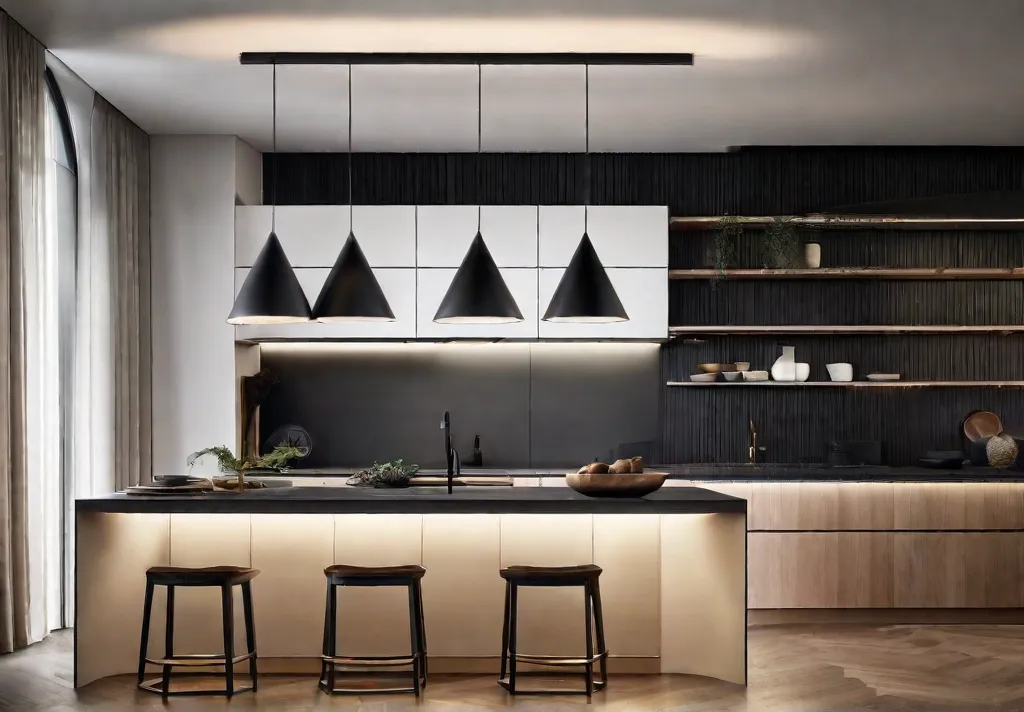Kitchens are undeniably one of the most critical rooms in a home. As spaces for gathering, cooking, and connecting, our kitchens should make us feel comfortable, inspired, and cared for. An often-overlooked detail that can genuinely transform the atmosphere of a kitchen is lighting. The proper lighting has the power to make a kitchen feel cozy or sleek, traditional or modern. It impacts how we move through and utilize the space. Lighting sets the mood for our interactions and activities in the kitchen.
When designed thoughtfully, kitchen lighting creates an inviting ambiance that nurtures everyone who enters. This article will explore 12 kitchen lighting ideas to help you develop a warm, welcoming kitchen filled with light.
The Significance of Kitchen Lighting for Atmosphere
Kitchen lighting serves several vital functions:
- Lighting enables us to safely and comfortably perform kitchen tasks like cooking, washing dishes, and preparing food.
- Lighting shapes the aesthetic feel and atmosphere of the space.
- Lighting impacts our mood and energy level while cooking, dining, and spending time in the kitchen.
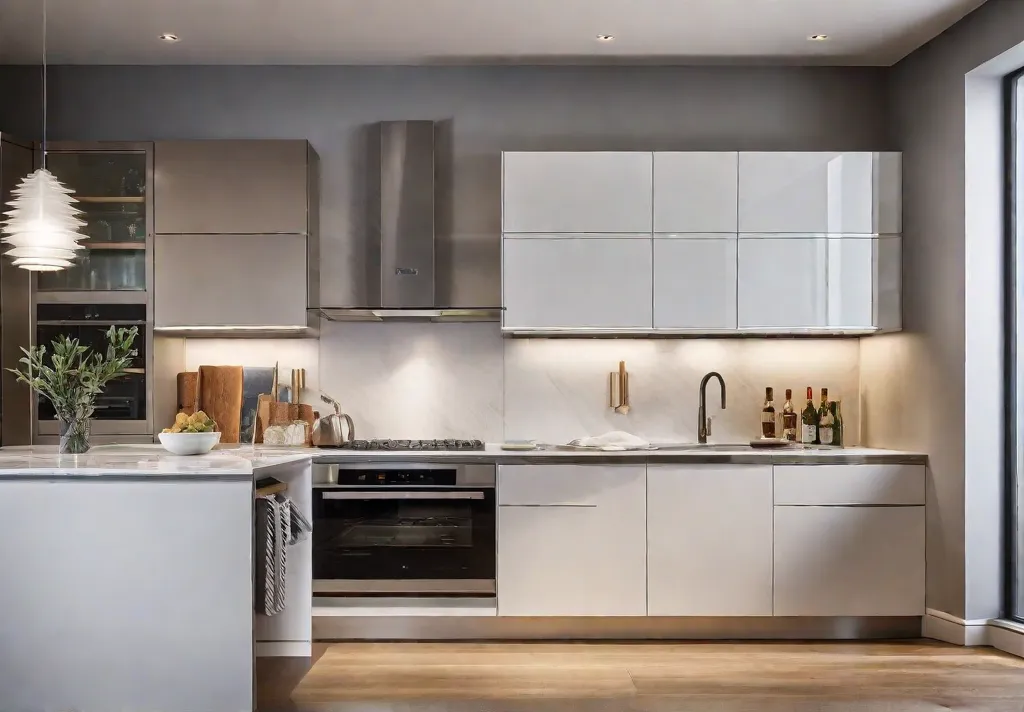
By layering different lighting sources and fixtures, we can fulfill all the kitchen's lighting needs beautifully. Ambient lighting offers general illumination for the entire space. Task lighting provides extra brightness in critical work areas. Accent lighting draws attention to specific architectural or decorative features. Together, these layers create depth and visual interest in the kitchen while providing both form and function.
An Introduction to Kitchen Lighting Layers
As mentioned above, adequate kitchen lighting combines three main layers: ambient, task, and accent lighting. But what do these terms mean exactly? Here is a quick introduction.
Ambient Lighting
Ambient lighting refers to general background lighting that provides overall visibility in a space. In a kitchen, ambient lighting usually comes from ceiling lights, chandeliers, and sometimes, pendant lights or sconces mounted on walls. Ambient lighting enables essential functions like walking through and observing the space without spotlighting specific areas.
Task Lighting
As the name suggests, task lighting focuses on particular work zones to facilitate kitchen duties like food preparation, cooking, and cleaning up. Under-cabinet lighting and pendant lights hovering above critical workstations are common forms of kitchen task lighting. Quality task lighting improves visibility, functionality, and safety when performing kitchen tasks.

Accent Lighting
Accent lighting adds a layer of visual interest to a kitchen by highlighting architectural details, displaying decor items, or illuminating artwork. Common types of accent lighting include track lights, directional spotlights, and adjustable picture lights. Used creatively, accent lighting can transform a basic kitchen into a visually stunning showpiece.
12 Kitchen Lighting Approaches for Maximum Appeal
Below, we cover 12 kitchen lighting ideas spanning various fixtures, features, and techniques. Refer to this list for inspiration when designing your warm, welcoming kitchen lighting scheme.
Pendant Lights
Pendant lights add stylish functionality above critical kitchen workstations and dining areas.
Size and Placement
- Allow 30-36 inches of clearance between the bottom of pendant shades and the counter surface below for kitchen islands and dining tables.
- Select pendant sizes, and quantities proportionate to the width of kitchen islands or dining tables.
- Stagger pendant lights at varying heights for extra visual intrigue.
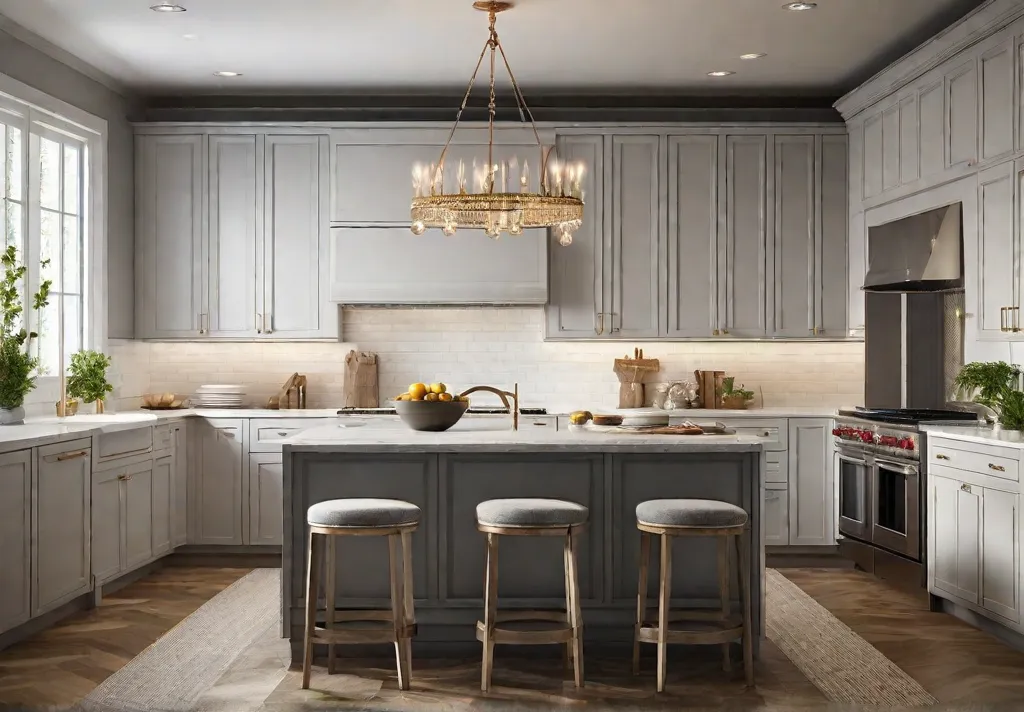
Style and Design
- Match pendant light finishes and colors to the kitchen decor. For example, brushed brass aligns with traditional kitchens, while matte black suits contemporary spaces.
- Opt for fabric, glass, or metal pendant shades that diffuse and soften light beautifully.
- Embrace bold colors or designs to use pendants as a style statement.
Under Cabinet Lighting
Under cabinet lighting casts a helpful glow onto kitchen countertops without glaring in your eyes as overhead lights often do.
Types
- LED Strips: Self-adhesive and energy efficient. Offer lighting customization abilities.
- Puck Lights: Concentrated beams ideal for focused tasks.
- Linear Lights: Sleek shapes provide uniform lighting distribution.
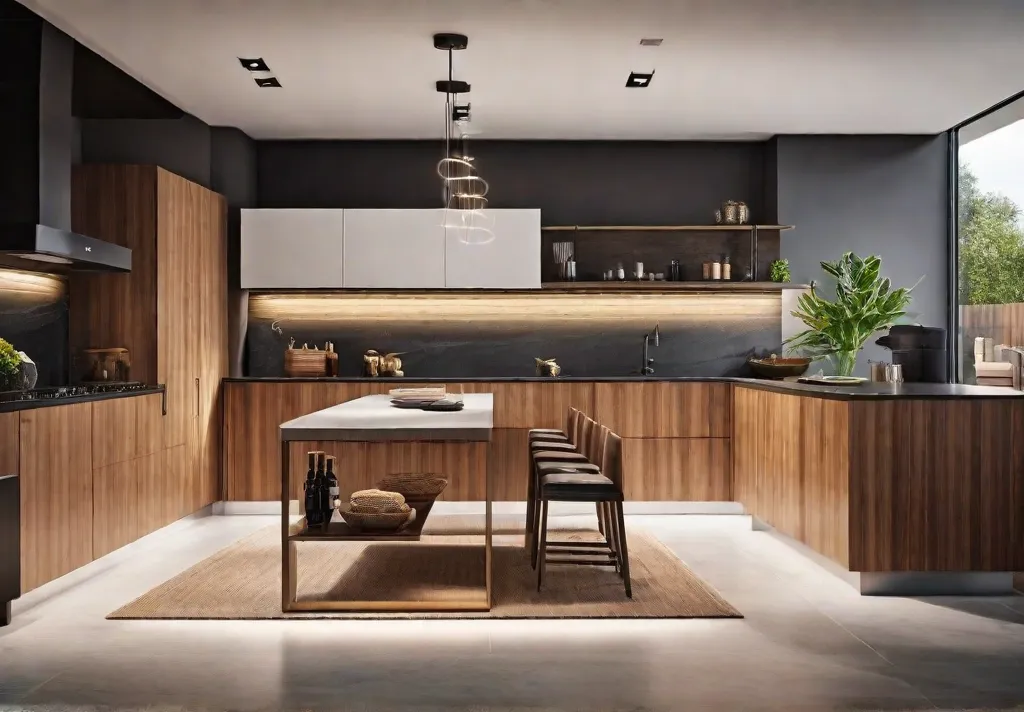
Tips
- Install under-cabinet lighting on dimmers to control brightness.
- Position the lights close to the front edge of the cabinets to maximize visibility.
- Consider "hidden" under cabinet lights behind cabinet doors to provide subtle, indirect illumination.
Recessed Lighting
Recessed downlights (also called can lights) create ambient lighting ideal for modern kitchen aesthetics.
Spacing Tips
- Space ceiling recessed lights evenly apart, with an average of 30-36 inches between lights.
- Make sure recessed fixtures sufficiently light the entire perimeter of the kitchen, not just the center.

Customization Options
- Use dimmers! Dimmers enable easy brightness adjustments to suit any activity or mood.
- Choose trim styles like wall wash lenses to distribute light across vertical surfaces.
- Select adjustable heads for focused directional lighting.
Statement Chandeliers
While chandeliers may seem unexpected for kitchens, the right style makes a gorgeous focal point.
Complementary Decor Tips
- Allow chandeliers to shine by keeping the surrounding architecture and decor simple.
- Try a bold chandelier paired with neutral cabinetry and muted wall colors.

Proportion Tips
- Use the 1/3 rule: Pick chandeliers with a diameter roughly 1/3 the width of the kitchen zone they illuminate.
- Ensure fixtures are in scale with the ceiling height or may need to be noticed.
Track Lighting
Adjustable spotlights set in tracks enable targeted illumination ideal for showcasing kitchen features.
Versatile Applications
- Brighten food prep zones like islands and peninsulas.
- Spotlight open shelving displaying glassware, dishes, or decorative items.
- Highlight artwork and architectural details like textured tile backsplashes.
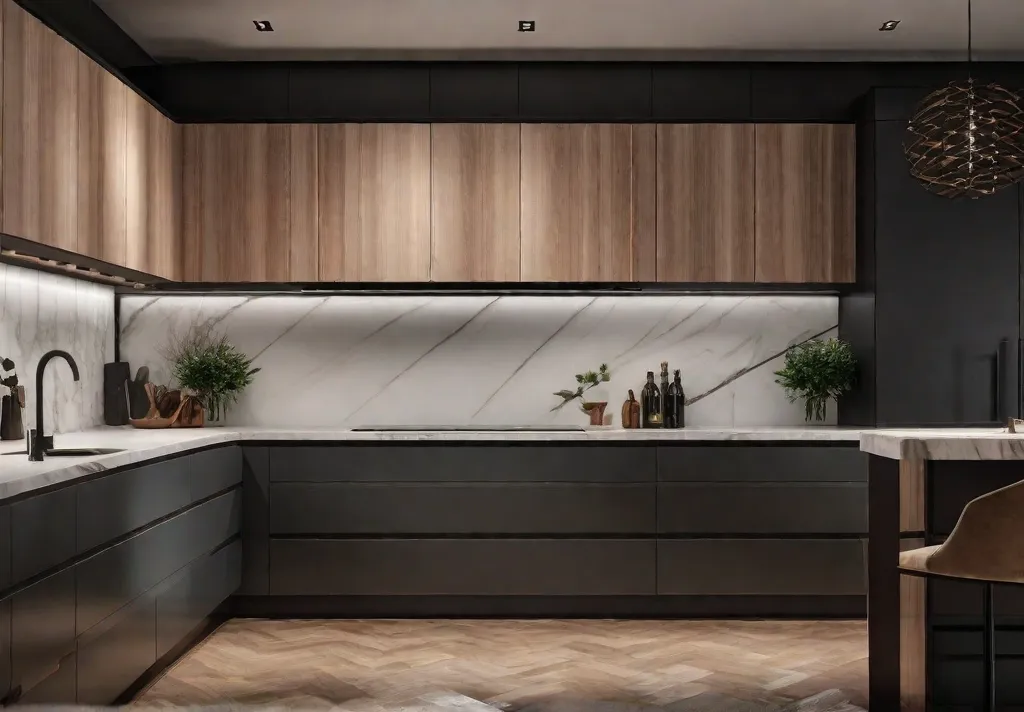
Design Options
- Monorail track for a minimalist look.
- The bendable track enables custom curves.
- Tracks with integrated pendants to combine lighting effects.
LED Strip Lights
For a modern ambient glow, LED strip lights belong under cabinets, inside glass cabinet doors, or atop ceiling-height cabinets.
Guidance
- Stick to visible areas instead of behind opaque cabinet doors for maximum effect.
- Use remote controls or smart home integration for easy color adjustments.
- Install aluminum channels for a clean, finished look.
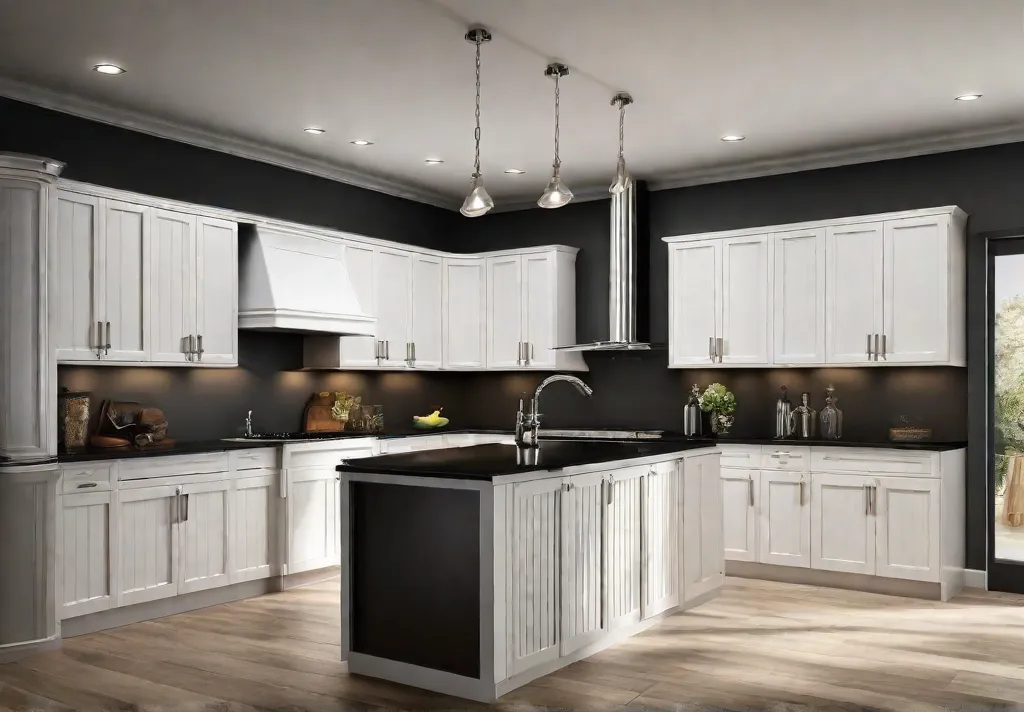
Natural Light
Abundant natural light always makes kitchens feel more fresh, airy, and inviting.
Tips
- Keep window treatments light and breezy.
- Add skylights for overhead sunshine.
- Incorporate reflective surfaces to amplify natural light.
Blending Natural and Artificial Light
- Use translucent pendant shades and glass cabinet doors to allow sunlight penetration.
- Select under-cabinet fixtures with bright, daylight-colored LEDs.
- Make sure recessed ceiling lights have a cool color temperature (5000K).
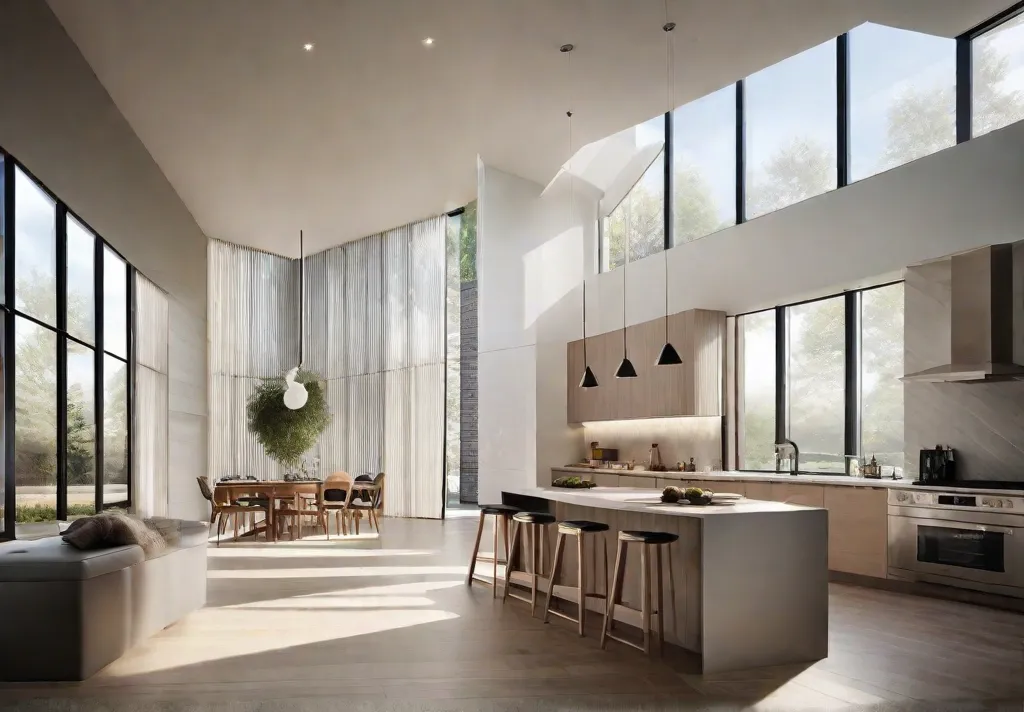
Directional Spotlights
As an accent lighting option, directional spotlights cast a focused beam that is ideal for highlighting specific kitchen features.
Tips
- Angle spotlights to create depth and shadows on highlighted surfaces.
- Bounce light off the ceiling or walls for soft, ambient fill lighting.
- Use warm light bulbs (2700K-3000K) in accent spots for coziness.
Creative Applications
- Illuminate architectural details like range hoods, built-in shelving, and textured backsplashes.
- Spotlight wall art, plants, or colorful glassware displays.
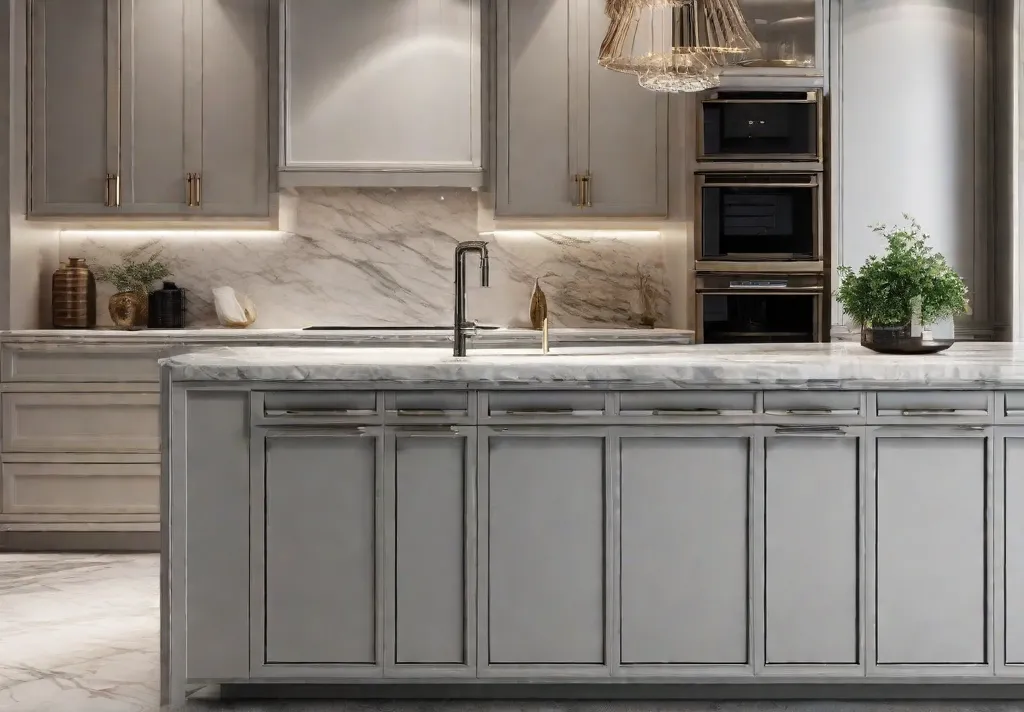
Wall Sconces
Mounted on walls, flanking sinks, stoves, and other workstations, sconces provide handy task lighting.
Ideal Locations
- On either side of the kitchen sinks.
- Next to ranges or cooktops.
- Beside kitchen cabinets and cabinetry.
Design Options
- Swing Arm Sconces: Adjust to direct light precisely.
- Plug-in styles: Offer versatile, custom positioning.
- Corner Mounted: Maximize light distribution in corners.

Step Lights
Step lights automatically illuminate pathways with a subtle glow when installed under cabinet toe kicks or wall-mounted steps.
Benefits
- Provides low-level ambient lighting.
- Enhances safety and visibility.
- It pairs well with hardwired kitchen sensors, so lights turn on automatically when you enter at night.
Tips
- Point step lights toward the floor to create a pool of light without glare.
- Choose warm, light temperatures for a welcoming, cozy effect.
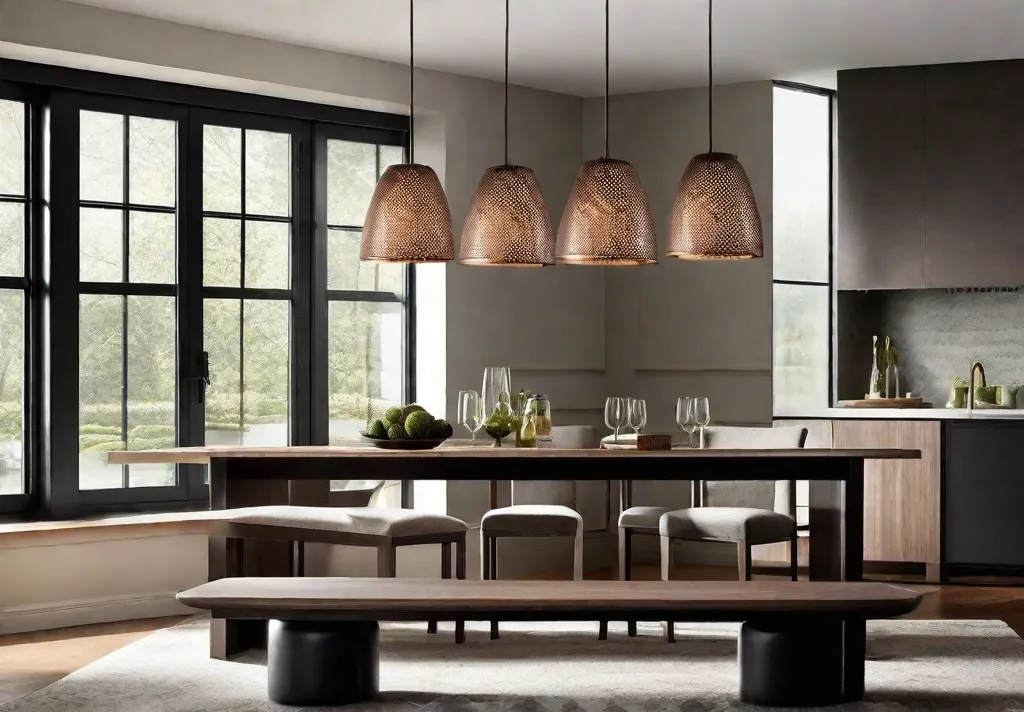
Lanterns
Whether hung from ceilings or mounted on walls, lanterns infuse kitchens with vintage farmhouse charm.
Ideas
- Suspend wire-wrapped lanterns over kitchen islands for rustic flair.
- Line a hallway or staircase leading to the kitchen with wall-mounted lanterns.
Guidance
- Select lantern styles with significant glass panes or perforated metal sides to allow ample light emission.
- Use flame-shaped LED bulbs to mimic a realistic flickering glow.
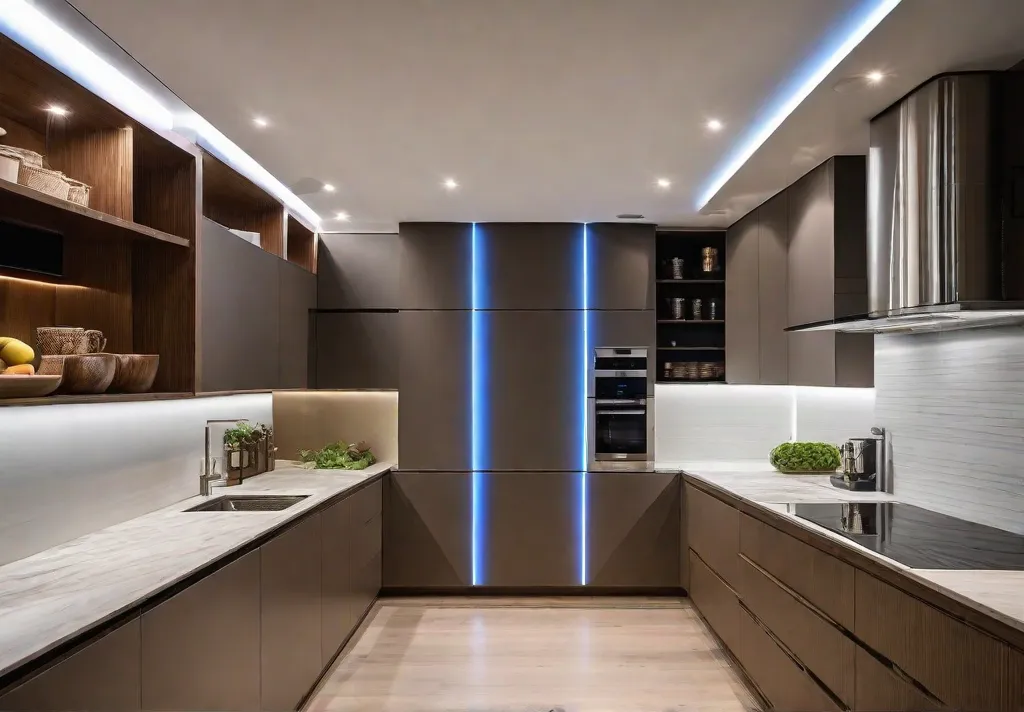
Picture Lights
Picture lights illuminate treasured art, plates, framed photos, or decorative wall accents in the kitchen.
Tips
- Install picture lights centered above and about 8-12 inches from the top of the wall decor.
- Choose slim, low-profile fixtures that won't distract from the art itself.
- Use dimmers and swivel heads to fine-tune the direction and intensity of picture lights.
Achieving the Ultimate Warm and Welcoming Kitchen Ambiance
The kitchen lighting ideas presented above reveal the many possibilities for designing a warm, welcoming, and visually stunning kitchen lighting scheme.
Remember, the objective is to layer multiple kinds of lighting. This creates depth and dimension that spotlights decor details alongside ample ambient and task lighting to meet functional needs.
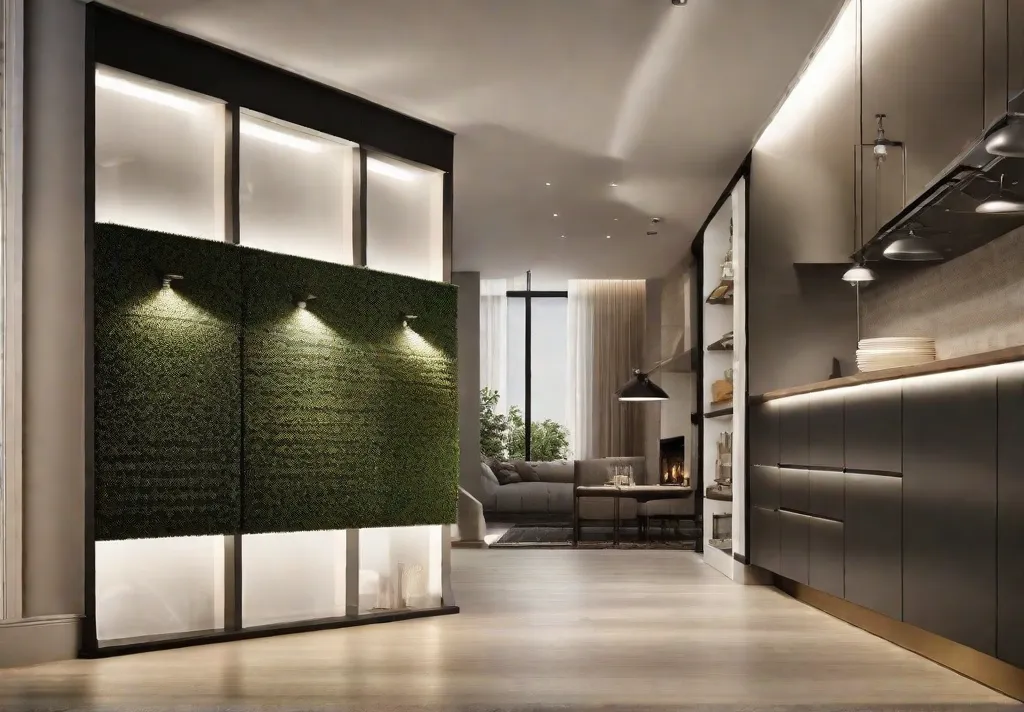
Additionally, vary the direction, color, and intensity of kitchen lighting. Play with fixtures mounted at different heights alongside natural and artificial light sources. This diversity keeps the lighting dynamic yet cohesive.
Finally, focus on lighting controls that empower further customization through dimmers, intelligent automation, and adjustable fixtures. Build flexibility into your kitchen lighting design so it can adapt to set the right mood every time.
With the right blend of creativity and strategy, your kitchen lighting will feel warm, welcoming, and inspiring as the cherished space.
Frequently Asked Questions About Kitchen Lighting Ideas
What are the three main types of kitchen lighting?
The three main types of kitchen lighting are ambient lighting (general illumination), task lighting (focused lighting for work areas), and accent lighting (for highlighting decorative details).
How many recessed lights do you need in a kitchen?
Generally, plan for at least one recessed light fixture per 25 square feet of kitchen space. Recessed lighting should provide consistent brightness across the entire perimeter of the room, not just the center.
Where should pendant lights be placed in a kitchen?
Mount pendant lights 30-36 inches above islands, sinks, and dining tables for ideal visibility. Ensure pendant fixtures hang at a height that doesn't interfere with working below.
What is a good lumen level for kitchen ceiling lights?
Aim for a minimum of 2000 to 2500 lumens for ambient ceiling lights that provide general illumination in kitchens up to 150 square feet. For larger kitchens or supplemental task lighting, 3000 to 4000 lumens is ideal.
How do you choose the correct size chandelier for a kitchen?
When selecting a kitchen chandelier, ensure its width equals about one-third the width of the root zone where it hangs. Additionally, choose fixtures appropriately scaled to the ceiling height if they need help.
What color temperature LED lights are best for kitchens?
Aim for color temperatures between 2700K-3000K to provide the warmest, most welcoming, and flattering illumination in kitchen spaces. This light range mimics incandescent bulbs. More excellent colors above 4000K emit a harsher blue tone.
Designing a warm, welcoming kitchen ambiance relies heavily on lighting selection and placement. You can transform a basic kitchen into a beloved gathering place filled with light by thoughtfully layering varied light sources, colors, and directions. Refer to this article's 12 kitchen lighting ideas for inspiration when creating a lighting scheme tailored to your space, style, and lighting needs. Most importantly, embrace creative approaches to lighting your kitchen so it feels like home.
